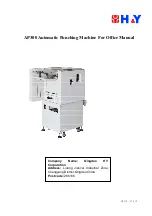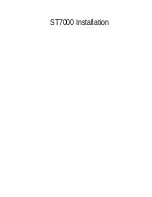
Section 10 – Operations related to timecode
06/97 – 1.00 – 10-5
1) Go to menu group E, and move the cursor to
Ext TC
:
2) Incoming timecode will be displayed on the
bottom line, together with the frame rate of the
timecode.
The
EXT TC
indicator will light when timecode is
received.
10.4.2 Timecode output
The timecode received at the
TIME CODE IN
jack,
or the timecode recorded on tape, can be output
from the
TIME CODE OUT
jack.
When the DA-98 is the timecode master, the time-
code it outputs should be off tape.
However, when the DA-98 is in the middle of a
timecode chain, you will probably want to retrans-
mit the incoming timecode (the
OUT
functions as
a
THRU
).
1) Go to menu group 5, move the cursor to
OutTc Src
(output timecode source), and
press
ENTER
:
2) Using the UP and DOWN keys, select one of the
three options:
Tape
; timecode will be replayed
off-tape,
External (regen)
; the external
timecode will be re-generated by the DA-98’s
generator, resulting in a clean signal, or
External (reshape)
; the timecode
signal will be simply filtered before being re-
transmitted.
10.4.3 Timecode output format
This
Fast LTC
function controls the way in
which timecode is output when fast winding the
tape, or if shuttling is carried out at greater than
normal playback speed.
The
5 Frame
setting means that timecode infor-
mation is not output continuously. Here, the DA-
98 reads the timecode from the tape as it is spool-
ing, outputs 5 consecutive frames at normal speed
starting with the value which has been read from
tape, then reads the tape again, outputs another 5
consecutive frames based on the new tape posi-
tion, and so on.
The
Leap
setting means that timecode is output
continuously during fast operations, and will not
be contiguous (it will leap between frames).
The
off
setting means that timecode is not out-
put during fast operations.
1) Go to menu group 5, move the cursor to
Fast LTC
and press
ENTER
:
2) Use the
UP
or
DOWN
keys to select the option as
described above.
10.4.4 Timecode output timing
Because of the nature of the digital-to-analog con-
version, the timecode which is output from the
DA-98 must be synchronized to match the audio
timing from either the digital or the analog audio
E x t
T C
A b s
D i f f
T a p e
T C
R e l
D i f f
G e n
T C
0 1 : 0 2 : 4 8 : 1 7
3 0 N D
O u t p u t
T C
S o u r c e
E x t e r n a l
( r e g e n )
NOTE
When the DA-98 is in CHASE mode, and the timecode
output has been set to
TC Track
(see 10.2.1,
“TcTrack setting”
), the timecode output from the
DA-98 will be the received timecode, with the offset
value added or subtracted from it. This means that any
other DTRS units slaved to the timecode output do not
need to have separate offset settings, but can use the
master DA-98’s offset.
F a s t
L T C
M o d e
5
F r a m e
Summary of Contents for DA-98
Page 7: ...Table of Contents TOC 4 1 00 06 97...
Page 13: ...Section 1 Introduction to the DA 98 1 6 1 00 06 97...
Page 19: ...Section 3 Rear Panel connectors 3 2 1 00 06 97...
Page 23: ...Section 4 Connections 4 4 1 00 06 97...
Page 35: ...Section 6 Basic operations 6 8 1 00 06 97...
Page 39: ...Section 7 Monitoring modes 7 4 1 00 06 97...
Page 55: ...Section 9 Synchronization with other DTRS units 9 6 1 00 06 97...
Page 75: ...Section 11 External control 11 6 1 00 06 97...
















































